Second Edition Richard P. Stanley
Visit to download the full and correct content document: https://ebookmass.com/product/enumerative-combinatorics-volume-2-second-editionrichard-p-stanley-2/
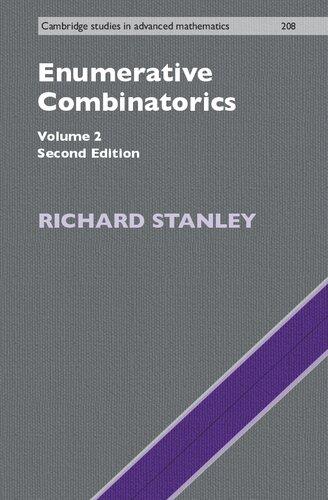
More products digital (pdf, epub, mobi) instant download maybe you interests ...

Enumerative Combinatorics: Volume 2: Second Edition
Richard P. Stanley
https://ebookmass.com/product/enumerative-combinatoricsvolume-2-second-edition-richard-p-stanley-3/

Enumerative Combinatorics: Volume 2: Second Edition
Richard P. Stanley
https://ebookmass.com/product/enumerative-combinatoricsvolume-2-second-edition-richard-p-stanley-2/
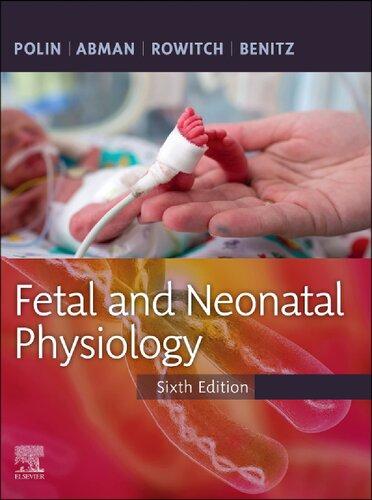
Fetal and Neonatal Physiology, 2-Volume Set 6th Edition
Richard A. Polin
https://ebookmass.com/product/fetal-and-neonatalphysiology-2-volume-set-6th-edition-richard-a-polin/

Principles of Bone Biology (2 Volume Set) 4th Edition
Edition John P. Bilezikian
https://ebookmass.com/product/principles-of-bonebiology-2-volume-set-4th-edition-edition-john-p-bilezikian/

(eBook PDF) America: The Essential Learning Edition (Second Edition) (Vol. Volume 2) 2nd Edition
https://ebookmass.com/product/ebook-pdf-america-the-essentiallearning-edition-second-edition-vol-volume-2-2nd-edition/
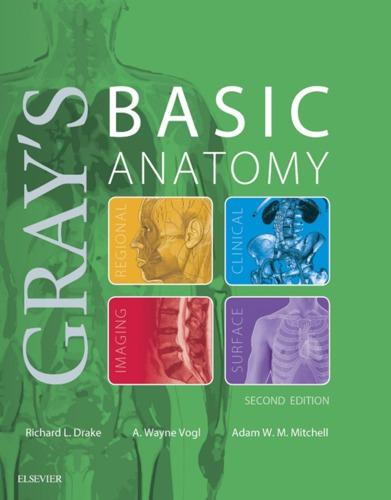
Gray's basic anatomy Second Edition Richard Lee Drake
https://ebookmass.com/product/grays-basic-anatomy-second-editionrichard-lee-drake/
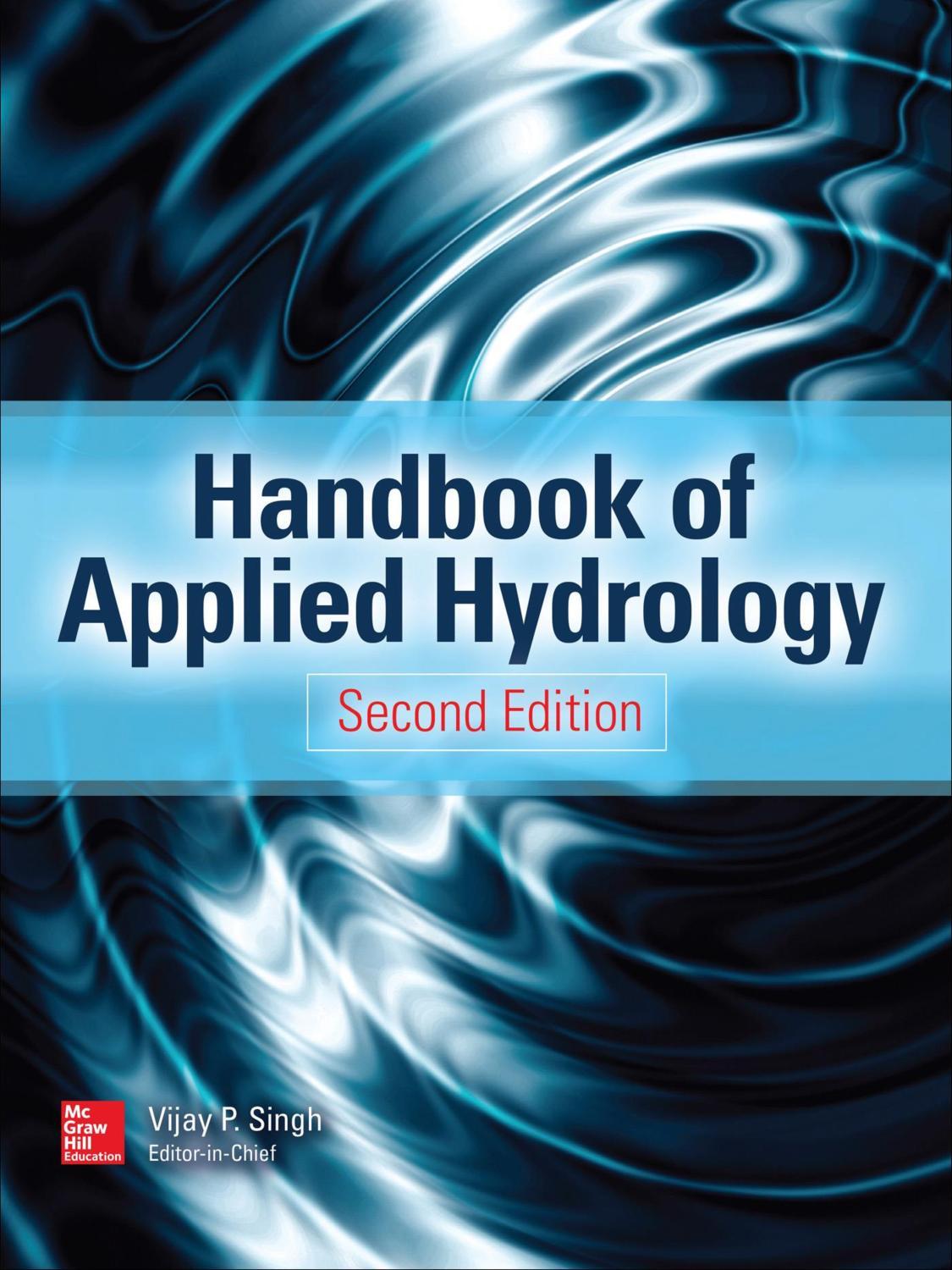
Handbook of Applied Hydrology, Second Edition Vijay P.
Singh
https://ebookmass.com/product/handbook-of-applied-hydrologysecond-edition-vijay-p-singh/
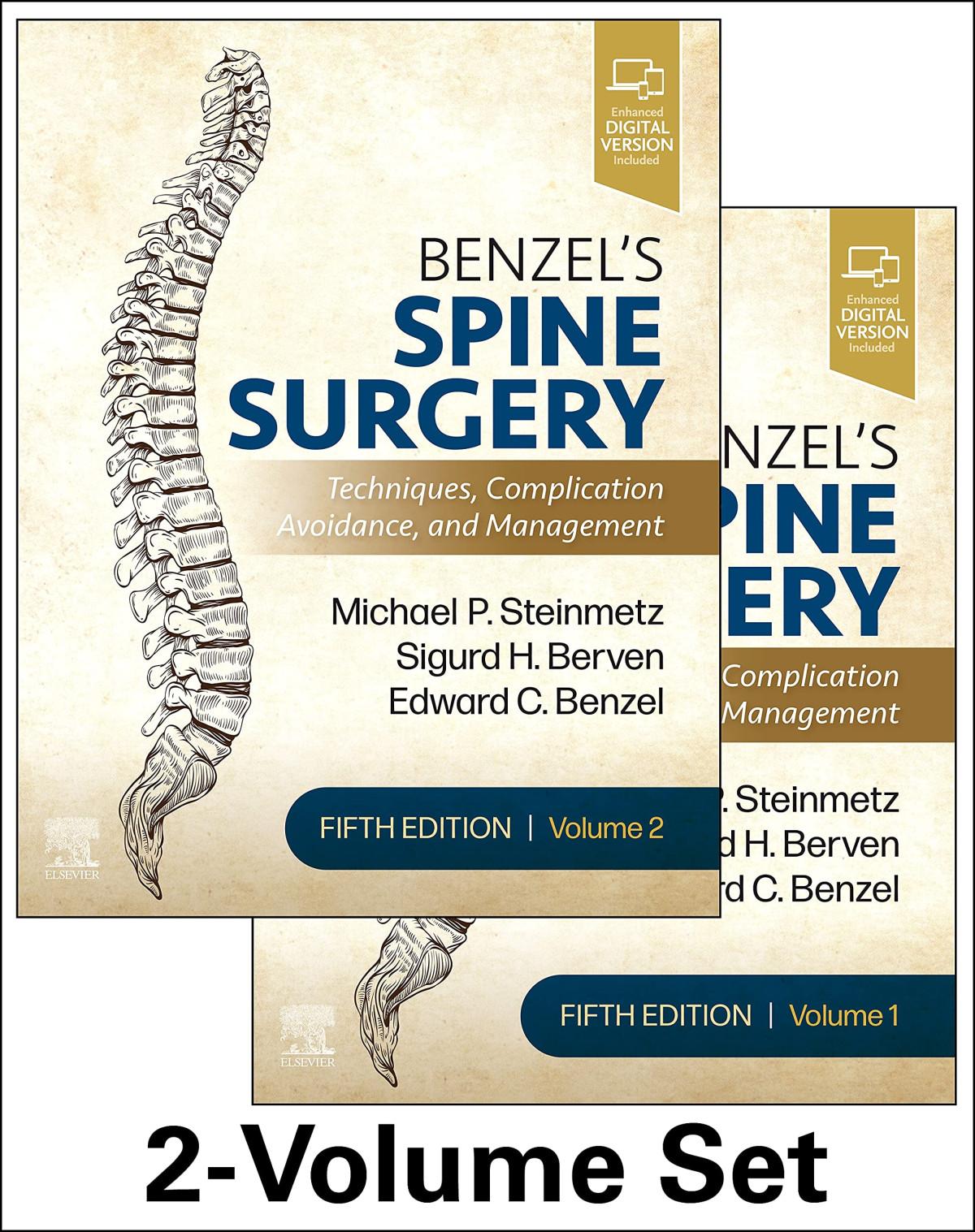
Benzel's Spine Surgery, 2-Volume Set: Techniques, Complication Avoidance and Management 5th Edition
Michael P Steinmetz Md (Editor)
https://ebookmass.com/product/benzels-spine-surgery-2-volume-settechniques-complication-avoidance-and-management-5th-editionmichael-p-steinmetz-md-editor/

Big Chance Cowboy Teri Anne Stanley [Stanley
https://ebookmass.com/product/big-chance-cowboy-teri-annestanley-stanley/
Volume 2
Second Edition
RICHARD STANLEY Enumerative Combinatorics


CAMBRIDGESTUDIESINADVANCEDMATHEMATICS208
EditorialBoard
J.BERTOIN,B.BOLLOB ´ AS,W.FULTON,B.KRA,I.MOERDIJK, C.PRAEGER,P.SARNAK,B.SIMON,B.TOTARO
ENUMERATIVECOMBINATORICS
Volume2
RichardStanley’stwo-volumebasicintroductiontoenumerativecombinatoricshas becomethestandardguidetothetopicforstudentsandexpertsalike.Thisthoroughly revisedsecondeditionofvolumetwocoversthecompositionofgeneratingfunctions, inparticulartheexponentialformulaandtheLagrangeinversionformula,labelledand unlabelledtrees,algebraic,D-finite,andnoncommutativegeneratingfunctions,and symmetricfunctions.Thechapteronsymmetricfunctionsprovidestheonlyavailabletreatmentofthissubjectsuitableforanintroductorygraduatecourseandfocusing oncombinatorics,especiallytheRobinson–Schensted–Knuthalgorithm.Anappendix bySergeyFomincoverssomedeeperaspectsofsymmetricfunctions,includingjeude taquinandtheLittlewood–Richardsonrule.Theexercisesinthebookplayavitalrolein developingthematerial,andthissecondeditionfeaturesover400exercises,including 159newexercisesonsymmetricfunctions,allwithsolutionsorreferencestosolutions.
RichardP.Stanley isEmeritusProfessorofMathematicsattheMassachusettsInstitute ofTechnologyandanArtsandSciencesDistinguishedProfessorattheUniversityof Miami.Hehaswrittenover180researcharticlesandsixbooks.AmongStanley’smany distinctionsaremembershipintheNationalAcademyofSciences(electedin1995)and the2001LeroyP.SteelePrizeforMathematicalExposition.
CAMBRIDGESTUDIESINADVANCEDMATHEMATICS
EditorialBoard
J.BERTOIN,B.BOLLOB ´ AS,W.FULTON,B.KRA,I.MOERDIJK, C.PRAEGER,P.SARNAK,B.SIMON,B.TOTARO
AllthetitleslistedbelowcanbeobtainedfromgoodbooksellersorfromCambridgeUniversity Press.Foracompleteserieslisting,visit www.cambridge.org/mathematics.
AlreadyPublished
171J.Gough&J.Kupsch QuantumFieldsandProcesses
172T.Ceccherini-Silberstein,F.Scarabotti&F.Tolli DiscreteHarmonicAnalysis
173P.Garrett ModernAnalysisofAutomorphicFormsbyExample,I
174P.Garrett ModernAnalysisofAutomorphicFormsbyExample,II
175G.Navarro CharacterTheoryandtheMcKayConjecture
176P.Fleig,H.P.A.Gustafsson,A.Kleinschmidt&D.Persson EisensteinSeriesand AutomorphicRepresentations
177E.Peterson FormalGeometryandBordismOperators
178A.Ogus LecturesonLogarithmicAlgebraicGeometry
179N.Nikolski HardySpaces
180D.-C.Cisinski HigherCategoriesandHomotopicalAlgebra
181A.Agrachev,D.Barilari&U.Boscain AComprehensiveIntroductiontoSub-Riemannian Geometry
182N.Nikolski ToeplitzMatricesandOperators
183A.Yekutieli DerivedCategories
184C.Demeter FourierRestriction,DecouplingandApplications
185D.Barnes&C.Roitzheim FoundationsofStableHomotopyTheory
186V.Vasyunin&A.Volberg TheBellmanFunctionTechniqueinHarmonicAnalysis
187M.Geck&G.Malle TheCharacterTheoryofFiniteGroupsofLieType
188B.Richter CategoryTheoryforHomotopyTheory
189R.Willett&G.Yu HigherIndexTheory
190A.Bobrowski GeneratorsofMarkovChains
191D.Cao,S.Peng&S.Yan SingularlyPerturbedMethodsforNonlinearEllipticProblems
192E.Kowalski AnIntroductiontoProbabilisticNumberTheory
193V.Gorin LecturesonRandomLozengeTilings
194E.Riehl&D.Verity Elementsof ∞-CategoryTheory
195 H.Krause HomologicalTheoryofRepresentations
196F.Durand&D.Perrin DimensionGroupsandDynamicalSystems
197A.Sheffer PolynomialMethodsandIncidenceTheory
198T.Dobson,A.Malniˇc&D.Maruˇsiˇc SymmetryinGraphs
199K.S.Kedlaya p-adicDifferentialEquations
200R.L.Frank,A.Laptev&T.Weidl Schr¨odingerOperators:EigenvaluesandLieb–Thirring Inequalities
201J.vanNeerven FunctionalAnalysis
202A.Schmeding AnIntroductiontoInfinite-DimensionalDifferentialGeometry
203F.CabelloS´anchez&J.M.F.Castillo HomologicalMethodsinBanachSpaceTheory
204G.P.Paternain,M.Salo&G.Uhlmann GeometricInverseProblems
205V.Platonov,A.Rapinchuk&I.Rapinchuk AlgebraicGroupsandNumberTheory,I(2nd Edition)
206D.Huybrechts TheGeometryofCubicHypersurfaces
207F.Maggi OptimalMassTransportonEuclideanSpaces
208R.P.Stanley EnumerativeCombinatorics,II(2ndedition)
209M.Kawakita ComplexAlgebraicThreefolds
210D.Anderson&W.Fulton EquivariantCohomologyinAlgebraicGeometry
“Thisisoneofthegreatbooks;readable,deepandfullofgems.Itbrings algebraiccombinatoricstolife.IteachoutofitandfeelthatifIcangetmy studentsto‘touchStanley’Ihavegiventhemagiftforlife.”
–PersiDiaconis,StanfordUniversity
“ItiswonderfultocelebratethecompletionofthesecondeditionofRichard Stanley’s EnumerativeCombinatorics,oneofthefinestmathematicalworks ofalltime.Hehasaddednearly200exercises,togetherwiththeiranswers,to whatwasalreadyauniquelymasterfulsummaryofavastandbeautifultheory. WhenpairedwiththesecondeditionofVolume1,histwoclassicvolumeswill surelybeatimelesstreasureforgenerationstocome.”
–DonaldE.Knuth,StanfordUniversity
“Anupdatedclassicwithamesmerizingarrayofinterconnectedexamples. ThroughStanley’smasterfulexposition,thecurrentandfuturegenerationsof mathematicianswilllearntheinherentbeautyandpleasuresofenumeration.”
–JuneHuh,PrincetonUniversity
“IhaveusedRichardStanley’sbooksonEnumerativeCombinatoricsnumerous timesforthecombinatoricsclassesIhavetaught.Thisneweditioncontains manynewexercises,whichwillnodoubtbeextremelyusefulforthenext generationofcombinatorialists.”
–AnneSchilling,UniversityofCalifornia,Davis
“RichardStanley’sEnumerativeCombinatorics,intwovolumes,isanessentialreferenceforresearchersandgraduatestudentsinthefieldofenumeration. Volume2,newlyrevised,includescomprehensivecoverageofcomposition andinversionofgeneratingfunctions,exponentialandalgebraicgenerating functions,andsymmetricfunctions.Thetreatmentofsymmetricfunctionsis especiallynoteworthyforitsthoroughnessandaccessibility.Engagingproblemsandsolutions,anddetailedhistoricalnotes,addtothevalueofthisbook. Itprovidesanexcellentintroductiontothesubjectforbeginnerswhilealso offeringadvancedresearchersnewinsightsandperspectives.”
–IraGessel,BrandeisUniversity
EnumerativeCombinatorics
Volume2
SecondEdition
RICHARDP.STANLEY
MassachusettsInstituteofTechnology
WithanAppendixby
SERGEYFOMIN
UniversityofMichigan


ShaftesburyRoad,CambridgeCB28EA,UnitedKingdom OneLibertyPlaza,20thFloor,NewYork,NY10006,USA
477WilliamstownRoad,PortMelbourne,VIC3207,Australia
314–321,3rdFloor,Plot3,SplendorForum,JasolaDistrictCentre, NewDelhi–110025,India
103PenangRoad,#05–06/07,VisioncrestCommercial,Singapore238467
CambridgeUniversityPressispartofCambridgeUniversityPress&Assessment, adepartmentoftheUniversityofCambridge.
WesharetheUniversity’smissiontocontributetosocietythroughthepursuitof education,learningandresearchatthehighestinternationallevelsofexcellence.
www.cambridge.org
Informationonthistitle: www.cambridge.org/9781009262491 DOI: 10.1017/9781009262538
©CambridgeUniversityPress1997,2012
©RichardP.Stanley2024
Thispublicationisincopyright.Subjecttostatutoryexception andtotheprovisionsofrelevantcollectivelicensingagreements, noreproductionofanypartmaytakeplacewithoutthewritten permissionofCambridgeUniversityPress&Assessment.
FirsteditionpublishedbyWadsworth1986
FirstCambridgeedition1997
Secondedition(Volume1)published2012
PrintedintheUnitedKingdombyTJBooksLimited,PadstowCornwall
AcataloguerecordforthispublicationisavailablefromtheBritishLibrary. ACataloging-in-PublicationdatarecordforthisbookisavailablefromtheLibraryof Congress.
ISBN978-1-009-26249-1Hardback ISBN978-1-009-26248-4Paperback
CambridgeUniversityPress&Assessmenthasnoresponsibilityforthepersistence oraccuracyofURLsforexternalorthird-partyinternetwebsitesreferredtointhis publicationanddoesnotguaranteethatanycontentonsuchwebsitesis,orwill remain,accurateorappropriate.
5TreesandtheCompositionofGeneratingFunctions
5.1TheExponentialFormula
5.4TheLagrangeinversionformula
6Algebraic,D-finite,andNoncommutativeGenerating
6.4 D-finitegeneratingfunctions
7.5Completehomogeneoussymmetricfunctions
7.6Aninvolution
7.7Powersumsymmetricfunctions
7.8Specializations
7.9Ascalarproduct
7.10ThecombinatorialdefinitionofSchurfunctions
7.11TheRSKalgorithm
7.12SomeconsequencesoftheRSKalgorithm
7.16TheJacobi–Trudiidentity
7.17TheMurnaghan–Nakayamarule
7.18Thecharactersofthesymmetricgroup
7.19Quasisymmetricfunctions
7.20PlanepartitionsandtheRSKalgorithm
7.21Planepartitionswithboundedpartsize
7.22ReverseplanepartitionsandtheHillman–Grassl correspondence
A1.1KnuthequivalenceandGreene’stheorem
A1.2ProofsofTheorems
A1.3Jeudetaquin
A1.4TheSch¨utzenbergerinvolution
A1.5TheLittlewood–RichardsonRule
A1.6VariationsoftheLittlewood–Richardsonrule
A1.7Notes
PrefacetoSecondEdition
Theprimarydifferencebetweenthissecondeditionandthefirstistheadditionof159newproblemsforChapter 7 (symmetricfunctions),almostall withsolutions.TheyappearintheChapter 7 sectionsentitled“Supplementary Exercises”and“SupplementarySolutions.”Thesenewproblemsarefurther evidenceoftheamazingfecundityofthetheoryofsymmetricfunctions.Philip Hallwaswellawareofthefuturepotentialofsymmetricfunctionswhenhe wroteina1955letter:∗
... wheneverinmathematicsyoumeetwithpartitions,youhaveonlytoturnoverthe stoneorliftupthebark,andyouwill,almostinfallibly,findsymmetricfunctionsunderneath.Moreprecisely,ifwehaveaclassofmathematicalobjectswhichinanaturaland significantwaycanbeplacedinone-to-onecorrespondencewiththepartitions,wemust expecttheinternalstructureoftheseobjectsandtheirrelationstooneanothertoinvolve soonerorlater thealgebraofsymmetricfunctions.
Withahandfulofexceptions,allthenewproblemsonsymmetricfunctions canbesolved(inprinciple,atanyrate)directlyfromthematerialofChapter 7. WedonotventureintoimportantextensionsoftheChapter 7 materialsuchas Macdonaldpolynomials, k-Schurfunctions,LLTpolynomials,cylindricSchur functions,etc.
Wehavealsocorrectedallknownerrorsinthefirsteditionandchangedall referencestomaterialinVolume1sothattheyconformtothesecondedition ofVolume1.AfewnewproblemshavebeenaddedoutsideChapter 7,asparts of otherproblems(soasnottoupsettheproblemnumbering),andreferences havebeenupdatedandslightlyexpanded.Theseparatelistofreferencesin eachchapterhavebeenmergedintoasinglelistappearingjustbeforetheindex. Thenumberingoftheorems,definitions,exercises,etc.,hasremainedthesame
∗ See mathshistory.st-andrews.ac.uk/Biographies/Hall. xiii
asinthefirstedition.However,someequationnumbersandfigurenumbers,as wellasalmostallthecitationnumbers,havebeenchanged.Theindexhasbeen upgraded;inparticular,everyreferencetoapersonisaseparatesubentry.
InnumerablepersonshavecontributedtothenewChapter 7 problems.They areacknowledgedintheproblemsolutions.IwouldalsoliketothankKaitlin LeachatCambridgeUniversityPressforherexcellenteditorialassistanceand toSureshKumarforhisTEXsupport.
Preface
Thisisthesecond(andfinal)volumeofagraduate-levelintroductiontoenumerativecombinatorics.Tothosewhohavebeenpatientlywaitingtwelveyears sincethepublicationofVolume1,Icanonlysaythatnooneismorepleased toseeVolume2finallycompletedthanmyself.IhavetriedtocoverwhatIfeel arethefundamentaltopicsinenumerativecombinatotics,andtheonesthat arethemostusefulinapplicationsoutsideofcombinatorics.Thoughthebook isprimarilyintendedtobeatextbookforgraduatestudentsandaresource forprofessionalmathematicians,Ihopethatundergraduatesandevenbright highschoolstudentswillfindsomethingofinterest.Forinstance,manyof the66combinatorialinterpretationsofCatalannumbersprovidedbyExercise 6.19 shouldbeaccessibletoundergraduateswithalittleknowledgeof combinatorics.
Muchofthematerialinthisbookhasneverappearedbeforeintextbook form.ThisisespeciallytrueofthetreatmentofsymmetricfunctionsinChapter 7.Althoughthetheoryofsymmetricfunctionsanditsconnectionswith combinatoricsisinmyopiniononeofthemostbeautifultopicsinallofmathematics,itisadifficultsubjectforbeginnerstolearn.Thesuperbbookby Macdonaldonsymmetricfunctionsishighlyalgebraicandeschewsthefundamentalcombinatorialtoolinthissubject,viz.,theRobinson-Schensted-Knuth algorithm.IhopethatChapter 7 adequatelyfillsthisgapinthemathematical literature.Chapter 7 shouldberegardedasonlyanintroductiontothetheory ofsymmetricfunctions,andnotasacomprehensivetreatment.
AsinVolume1theexercisesplayavitalroleindevelopingthesubject.Ifin readingthetextthereaderisleftwiththefeelingof“what’sitgoodfor?”andis notsatisfiedwiththeapplicationspresentedthere,then(s)heshouldturntothe exerciseshopefullytodispelsuchdoubts.Thankstothewondersofelectronic word-processingIfounditmucheasierthanforVolume1toassembleawide varietyofexercisesandsolutions.
Iamgratefultothemanypersonswhohavecontributedinanumberof waystotheimprovementofthisbook.SpecialthanksgoestoSergeyFomin forhismanysuggestionsrelatedtoChapter 7,andespeciallyforhismasterfulexpositionofthedifficultmaterialofAppendix 1.Otherpersonswhohave carefullyreadportionsofearlierversionsofthebookandwhohaveoffered valuablesuggestionsareChristineBessenrodt,FrancescoBrenti,PersiDiaconis,WungkumFong,PhilHanlon,andMichelleWachs.RobertBeckertyped mostofChapter 5,andTomRobyandBonnieFriedmanprovidedinvaluable TEX assistance.Thefollowingadditionalpersonshavemadeatleastonesignificantcontributionthatisnotexplicitlymentionedinthetext,andIregret ifIhaveinadvertentlyomittedanyoneelsewhobelongsonthislist:ChristosAthanasiadis,AndersBjorner,MireilleBousquet-M´elou,BradleyBrock, DavidBuchsbaum,EmericDeutsch,KimmoEriksson,DominiqueFoata,Ira Gessel,CurtisGreene,PatriciaHersh,MartinIsaacs,BenjaminJoseph,Martin Klazar,DonaldKnuth,DarlaKremer,PeterLittelmann,ValeryLiskovets,Ian Macdonald,AlexanderMednykh,ThomasM¨uller,AndrewOdlyzko,AlexanderPostnikov,RobertProctor,DouglasRogers,LouShapiro,RodicaSimion, MarkSkandera,LouisSolomon,DennisStanton,RobertSulanke,Sheila Sundaram,Jean-YvesThibon,andAndreiZelevinsky.
5 TreesandtheCompositionofGenerating Functions
5.1TheExponentialFormula
If F(x)and G(x)areformalpowerserieswith G(0) = 0, thenwehaveseen (afterProposition1.1.9)thatthecomposition F(G(x))isawell-definedformal powerseries.Inthischapterwewillinvestigatethecombinatorialramifications ofpowerseriescomposition.Inthissectionwewillbeconcernedwiththecase where F(x)and G(x)areexponentialgeneratingfunctions,andespeciallythe case F(x) = ex .
Let usfirstconsiderthecombinatorialsignificanceoftheproduct F(x)G(x) of twoexponentialgeneratingfunctions
Throughoutthischapter K denotesafieldofcharacteristic0(suchas C withsomeindeterminatesadjoined).Wealsodenoteby Ef (x)theexponential generating functionofthefunction f : N → K,thatis,
(n) xn n! .
5.1.1Proposition. Givenfunctionsf , g : N → K,defineanewfunctionh : N → Kbytherule
whereXisafiniteset,andwhere(S,T)rangesoverallweakorderedpartitions ofXintotwoblocks,thatis,S ∩ T =∅ andS ∪ T = X . Then
Proof. Let#X = n.Thereare(n k ) pairs(S, T )with#S = k and#T = n k,so
Fromthisequation(5.2)follows.
OnecouldalsoproveProposition 5.1.1 byusingTheorem3.18.41 appliedto thebinomialposet B ofExample3.18.3.
WehavestatedProposition 5.1.1 intermsofacertainrelationship(5.1) amongfunctions f , g and h,butitisimportanttounderstanditscombinatorialsignificance.Supposewehavetwotypesofstructures,say α and β,which canbeputonafiniteset X .Weassumethattheallowedstructuresdependonly onthecardinalityof X .Anew“combined”typeofstructure,denoted α ∪ β, canbeputon X byplacingstructuresoftype α and β onsubsets S and T , respectively,of X suchthat S ∪ T = X , S ∩ T =∅.If f (k) (respectively g(k)) are thenumberofpossiblestructuresona k-setoftype α (respectively, β), thentheright-handsideof(5.1)countsthenumberofstructuresoftype α ∪ β on X .Moregenerally,wecanassignaweight w( ) toanystructure oftype α or β.Acombinedstructureoftype α ∪ β isdefinedtohaveweightequal totheproductoftheweightsofeachpart.If f (k) and g(k) denotethesumof theweightsofallstructuresona k-setoftypes α and β,respectively,thenthe right-handsideof(5.1)countsthesumoftheweightsofallstructuresoftype α ∪ β on X .
5.1.2Example. Givenan n-elementset X , let h(n)bethenumberofwaysto split X into twosubsets S and T with S ∪T = X , S ∩T =∅;andthentolinearly ordertheelementsof S andtochooseasubsetof T .Thereare f (k) = k! ways tolinearlyordera k-elementset,and g(k) = 2k waystochooseasubsetofa k-elementset.Hence
Proposition 5.1.1 canbeiteratedtoyieldthefollowingresult.
5.1.3Proposition. Fixk ∈ P andfunctionsf1, f2, ... , fk : N → K Definea newfunctionh : N → Kby
where (T1, . .. , Tk ) rangesoverallweakorderedpartitionsofSintokblocks, thatis,T1, ... , Tk aresubsetsofSsatisfying:(i)Ti ∩ Tj =∅ ifi = j,and(ii) T1 ∪···∪ Tk = S.Then
Eh(x) = k i=1 Efi (x).
Wearenowabletogivethemainresultofthissection,whichexplains thecombinatorialsignificanceofthecompositionofexponentialgenerating functions.
5.1.4Theorem (theCompositionalFormula). Given functionsf : P → K andg : N → Kwithg(0) = 1,defineanewfunctionh : N → K by h(#S) =
h(0) = 1,
wherethesumrangesoverallpartitions(asdefinedinSection1.9) π = {B1, , Bk } ofthefinitesetS.Then
Eh(x) = Eg (Ef (x)).
(HereEf (x) = n≥1 f (n) xn n! ,sincefisonlydefinedonpositiveintegers.)
Proof. Suppose#S = n,andlet hk (n)denotetheright-handsideof(5.3)for fixed k.Since B1, ... , Bk arenonemptytheyarealldistinct,sothereare k! ways oflinearlyorderingthem.ThusbyProposition 5.1.3,
Summing (5.3)overall k ≥ 1yieldsthedesiredresult.
Theorem 5.1.4 hasthefollowingcombinatorialsignificance.Manystructuresonaset,suchasgraphsorposets,mayberegardedasdisjointunions oftheirconnectedcomponents.Inaddition,someadditionalstructuremaybe placedonthecomponentsthemselves,forexample,thecomponentscouldbe linearlyordered.Ifthereare f ( j)connectedstructuresona j-setand g(k) ways
Figure5.1Acirculararrangementoflines toplaceanadditionalstructureon k components,then h(n)isthetotalnumber ofstructuresonan n-set.Thereisanobviousgeneralizationtoweighted structures,suchaswasdiscussedafterProposition 5.1.1 Thefollowingexampleshouldhelptoelucidatethecombinatorialmeaning ofTheorem 5.1.4;moresubstantialapplicationsaregiveninSection 5.2
5.1.5 Example. Let h(n)bethenumberofwaysfor n persons toforminto nonemptylines,andthentoarrangetheselinesinacircularorder.Figure 5.1 showsonesucharrangementofninepersons.Thereare f ( j) = j! waysto linearlyorder j persons,and g(k) = (k 1)! waystocircularlyorder k ≥ 1 lines.Thus
whence h(n) = (2n 1)(n 1)!.Naturallysuchasimpleanswerdemandsa simple combinatorialproof.Namely,arrangethe n personsinacirclein(n 1)!
Figure5.2AnequivalentformofFigure 5.1
ways.Ineachofthe n spacesbetweentwopersons,eitherdoordonotdrawa bar,exceptthatatleastonebarmustbedrawn.Therearethus2n 1choices forthebars.Betweentwoconsecutivebars(orabaranditselfifthereisonly onebar)readthepersonsinclockwiseordertoobtaintheirorderinline.See Figure 5.2 forthismethodofrepresentingFigure 5.1.
The mostcommonuseofTheorem 5.1.4 isthecasewhere g(k) = 1 for all k.Incombinatorialterms,astructureisputtogetherfrom“connected”components,butnoadditionalstructureisplacedonthecomponents themselves.
5.1.6Corollary (theExponentialFormula). Given afunctionf : P → K, defineanewfunctionh : N → Kby
(0) = 1.
Then
Let ussayabriefwordaboutthecomputationalaspectsofequation(5.5). Ifthefunction f (n)isgiven,thenonecanuse(5.4)tocompute h(n).However, there isamuchmoreefficientwaytocompute h(n)from f (n)(andconversely).
5.1.7 Proposition. Letf : P → Kandh : N → KberelatedbyEh(x) = exp Ef (x) (so inparticularh(0) = 1).Thenwehaveforn ≥ 0 the recurrences
Proof. Differentiate E
)toobtain
Nowequatecoefficientsof xn/n! on bothsidesof(5.8)toobtain(5.6).(It is alsoeasytogiveacombinatorialproofof(5.6).)Equation(5.7)isjusta rearrangementof(5.6).
Thecompositionalandexponentialformulasareconcernedwithstructures onaset S obtainedbychoosingapartitionof S andthenimposingsome“connected”structureoneachblock.Insomesituationsitismorenaturaltochoose a permutation of S andthenimposea“connected”structureoneachcycle. Thesetwosituationsareclearlyequivalent,sinceapermutationisnothingmore thanapartitionwithacyclicorderingofeachblock.However,permutations ariseoftenenoughtowarrantaseparatestatement.Recallthat S(S)denotes theset(orgroup)ofallpermutationsoftheset S
5.1.8Corollary (theCompositionalFormula,permutationversion). Given functions f : P → Kandg : N → Kwithg(0) = 1,defineanewfunction h : P → K by
(#S) =
h(0) = 1, whereC1, C2, , Ck arethecyclesinthedisjointcycledecompositionof π Then
Proof. Sincethereare(j 1)! waystocyclicallyordera j-set,equation(5.9) maybewritten
(#S) =
sobyTheorem 5.1.4, Eh(x) = Eg
.
= Eg
n≥1 (n 1)!f (n) xn n!
n≥1 f (n) xn n
5.1.9Corollary (theExponentialFormula,permutationversion). Given a functionf : P → K,defineanewfunctionh : N → Kby h(#S) = π ∈S(S) f (#C1)f (#C2) · ·· f (#Ck ), #S > 0, h(0) = 1,
wherethenotationisthesameasinCorollary 5.1.8.Then
Eh(x) = exp n≥1 f (n) xn n .
InChapter3.18(seeExample3.18.3(b))werelatedadditionandmultiplicationofexponentialgeneratingfunctionstotheincidencealgebraofthelattice offinitesubsetsof N.Thereisasimilarrelationbetween composition ofexponentialgeneratingfunctionsandtheincidencealgebraofthelattice n of partitionsof[n](orany n-set).Moreprecisely,weneedtoconsidersimultaneouslyall n for n ∈ P.RecallfromSection3.10thatif σ ≤ π in n,then wehaveanaturaldecomposition [σ
where |σ | = iai and |π | = ai.Let = ( 1, 2, . .. ).Foreach n ∈ P, let fn ∈ I( n, K), theincidencealgebraof n.Supposethatthesequence f = ( f1, f2, ... )satisfiesthefollowingproperty:Thereisafunction(alsodenoted f ) f : P → K suchthatif σ ≤ π in n and[σ , π ]satisfies(5.10),then
Wethencall f a multiplicativefunction on .
Forinstance,if ζn isthezetafunctionof n,then ζ = (ζ1, ζ2, . .. )ismultiplicativewith ζ (n) = 1 forall n ∈ P.If µn istheM¨obiusfunctionof n, thenbyProposition3.8.2andequation(3.37)weseethat µ = (µ1, µ2, . .. )is multiplicativewith µ(n) = ( 1)n 1(n 1)!.
Let f = ( f1, f2, ... )and g = (g1, g2, . .. ),where fn, gn ∈ I( n, K). Wecan definethe convolutionfg = (( fg)1,( fg)2, ... )by
( fg)n = fngn (convolutionin I( n, K)). (5.12)
5.1.10Lemma. Iffandgaremultiplicativeon ,thensoisfg.
Proof. Let P and Q belocallyfiniteposets,andlet u ∈ I(P, K), v ∈ I(Q, K).
Define u × v ∈ I(P × Q, K)by
u × v((x, x ),(y, y )) = u(x, y)v(x , y ).
ThenastraightforwardargumentasintheproofofProposition3.8.2shows that(u × v)(u × v ) = uu × vv . Thusfrom(5.10)wehave ( fg)n(σ , π ) = f1g1( ˆ 0, ˆ 1)a1 · ·· fngn( ˆ 0, ˆ 1)an = fg(1)a1 ··· fg(n)an .
ItfollowsfromLemma 5.1.10 thattheset M ( ) = M ( , K) ofmultiplicativefunctionson formsasemigroupunderconvolution.Infact, M ( ) is evenamonoid(=semigroupwithidentity),sincetheidentityfunction δ = (δ1, δ2, . .. )ismultiplicativewith δ(n) = δ1n. (CAVEAT: M ( )is not closed underaddition!)
5.1.11Theorem. Defineamap φ : M ( ) → xK[[x]] (the monoidofpower serieswithzeroconstanttermundercomposition)by φ( f ) = Ef (x) = n≥1 f (n) xn n!
Then φ isananti-isomorphismofmonoids,thatis, φ isabijectionand φ( fg) = Eg (Ef (x)).
Proof. Clearly φ isabijection.Since fg ismultiplicativebyLemma 5.1.10,it sufficestoshowthat n≥1 fg(n) xn n! = Eg (Ef (x)).
Bydefinitionof fg(n),wehavein I( n, K)
fg(n) =
,
Since (5.13)agreeswith(5.3),theprooffollowsfromTheorem 5.1.4.
ThenextresultfollowsfromTheorem 5.1.11 inthesamewaythatProposition3.18.5followsfromTheorem3.18.4(usingProposition 5.4.1),sothe proofisomitted.(AdirectproofavoidingTheorem 5.1.11 canalsobegiven.)
If f = ( f1, f2, )where fn ∈ I( n, K) andeach f 1 n existsin I( n, K), then wewrite f 1 = ( f 1 1 , f 1 2 , ).
5.1.12Proposition. Supposefismultiplicativeandf 1 exists. Thenf 1 is multiplicative.
5.1.13Example. Let ζ , δ, µ ∈ M ( )havethesamemeaningsasabove,so ζ µ = µζ = δ.Now
so byTheorem 5.1.11 [exp Eµ(x)] 1 = x
Thus wehaveanotherderivationoftheMobiusfunctionof n (equation(3.37)).
5.1.14Example. Let h(n)bethenumberofwaystopartitiontheset[n],and then partitioneachblockintoblocksofoddcardinality.Weareaskingforthe numberofchains ˆ 0 ≤ π ≤ σ ≤ ˆ 1in n suchthatallblocksizesof π areodd. Define f ∈ M ( )by
Thenclearly h = f ζ 2,sobyTheorem 5.1.11, Eh(x) = Eζ (Eζ (Ef (x))) = exp
exp
= exp(e sinh x 1) 1.
Wehavediscussedinthissectionthecombinatorialsignificanceofmultiplyingandcomposingexponentialgeneratingfunctions.Threefurtheroperations areimportanttounderstandcombinatorially:addition,multiplicationby x (reallyaspecialcaseofarbitrarymultiplication,butofspecialsignificance), anddifferentiation.
5.1.15Proposition. LetSbeafiniteset.Givenfunctionsf , g : N → K,define newfunctionsh1, h2, h3, andh4 asfollows: h1(#S) = f (#
h2(#S) = (#S)f (#T ), where #T = #S 1
Then
Proof. Easy.
Equation(5.14)correspondstoachoiceoftwostructurestoplaceon S,one enumeratedby f andoneby g.Inequation(5.15),we“root”avertex v of S (i.e.,wechooseadistinguishedvertex v,oftencalledthe root)andthenplacea structureontheremainingvertices T = S −{x}.Equation(5.16)corresponds toadjoininganextraelementto S andthenplacingastructureenumeratedby f .Finallyinequation(5.17)wearesimplyplacingastructureon S androoting avertex.
Aswewillseeinsubsequentsections,manystructureshavearecursive naturebywhichwecanobtainfromtheresultsofthissectionfunctionalequationsordifferentialequationsforthecorrespondingexponentialgenerating
function.Letusillustratetheseideasherebyinterpretingcombinatoriallythe formula Eh(x) = Ef (x)Eh(x)ofequation(5.8).Theleft-handsidecorresponds to thefollowingconstruction:takea(finite)set S,adjoinanewelement t,and thenplaceon S ∪{t} astructureenumeratedby h (or“h-structure”).Therighthandsidesays:chooseasubset T of S,adjoinanelement t to T ,placeon T ∪{t} an f -structure,andplaceon S T an h-structure.Clearlyif h and f are related by(5.4)(sothat h-structuresareuniquedisjointunionsof f -structures)then thecombinatorialinterpretationsof Eh(x)and Ef (x)Eh(x)areequivalent.
5.2 ApplicationsoftheExponentialFormula
ThemoststraightforwardapplicationsofCorollary 5.1.6 concernstructures whichhaveanobviousdecompositioninto“connectedcomponents.”
5.2.1Example. Thenumberofgraphs(withoutloopsormultipleedges)on an n-elementvertexset S is clearly2(n 2).(Eachofthe n 2 pairsofverticesmay ormaynotbejoinedbyanedge.)Let c(#S) = c(n)bethenumberof connected graphsonthevertexset S.Sinceagraphon S isobtainedbychoosingapartition π of S andthenplacingaconnectedgraphoneachblockof π ,weseethat equation(5.5)holdsfor h(n) = 2(n 2) and f (n) = c(n).HencebyCorollary 5.1.6,
Equivalently,
Notethatthegeneratingfunctions Eh(x)and Ec(x)havezeroradiusof convergence;nevertheless,theystillhavecombinatorialmeaning.
Ofcoursethereisnothingspecialaboutgraphsintheaboveexample.If,for instance, h(n)isthenumberofposets(ordigraphs,topologies,triangle-free graphs, ... )onan n-setand c(n)isthenumberofconnectedposets(digraphs, topologies,triangle-freegraphs, ... )onan n-set,thenthefundamentalrelation Eh(x) = exp Ec(x)continuestohold.Insomecases(suchasgraphs and digraphs)wehaveanexplicitformulafor h(n),butthisisanincidental “bonus.”
5.2.2Example. Supposeweareinterestedinnotjustthenumberofconnected graphsonan n-elementvertexset,butratherthenumberofsuchgraphswith exactly k components.Let ck (n)denotethisnumber,anddefine
TherearetwowaystoobtainthisgeneratingfunctionfromTheorem 5.1.4 and Corollary 5.1.6.Wecaneitherset f (n) = c(n)and g(k) = tk in (3),orset f (n) = c(n)t in (5.5).Ineithercasewehave
(n) =
Againthesamereasoningworksequallyaswellforposets,digraphs,topologies, ... Ingeneral,if Eh(x)istheexponentialgeneratingfunctionforthetotal number ofstructuresonan n-set(whereofcourseeachstructureisaunique disjoint unionofconnectedcomponents),then Eh(x)t also keepstrackofthe numberofcomponents,asin(5.23).Equivalently,if h(n)isthenumberof structuresonan n-setand ck (n)thenumberwith k components, then
))
, whereweset ck (0) = δ0k and h(0) = 1.Inparticular,if h(n) = n! (the number ofpermutationsofan n-set)then Eh(x) = (1 x) 1 while ck (n) = c(n, k), the numberofpermutationsofan n-setwith k cycles.Inotherwords, c(n, k) isa signlessStirlingnumberofthefirstkind(seeChapter1.3);andweget
